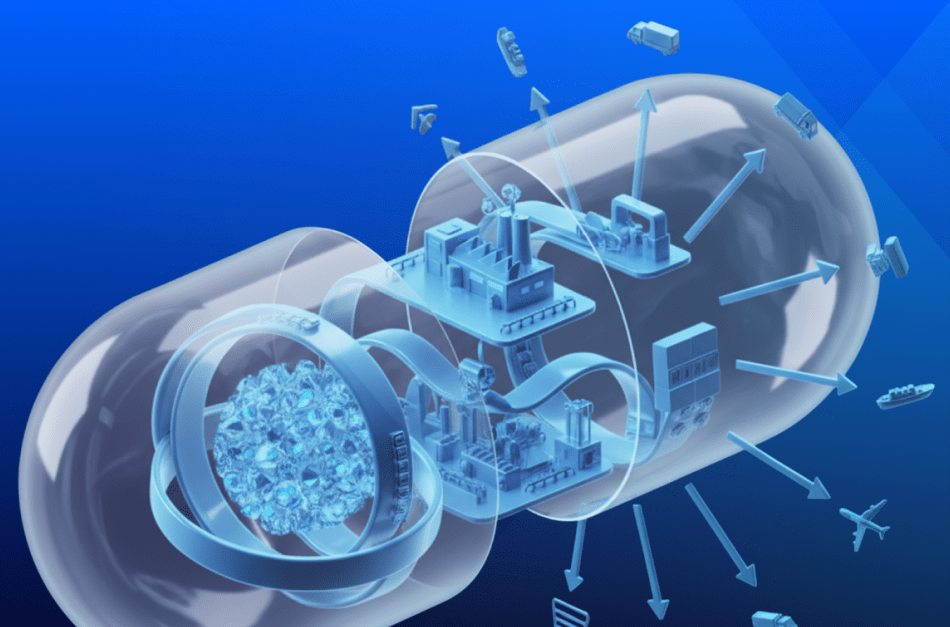Good Manufacturing Practices (GMP) ensure that products meet quality standards and are safe for use or consumption. A GMP-compliant system is essential for companies that must adhere to regulatory requirements to produce safe and effective products. A GMP system involves guidelines and procedures regulating the manufacturing process, including product design, production, and testing. Regulatory bodies, such as the FDA, set these guidelines, and compliance is mandatory for companies operating in industries like pharmaceuticals, biotech, and food and beverage. Implementing a GMP system can be complex, but the right design can help companies streamline processes, minimize errors, and maintain compliance.
A study published in the Journal of Pharmaceutical Innovation found that implementing an electronic GMP system resulted in a 15% reduction in product defects and a 20% reduction in manufacturing time.
Key Considerations for Designing a System to Handle GMP Processes
Understand the Regulatory Requirements
The first step in designing a GMP system is understanding the regulatory requirements for your industry. GMP guidelines are detailed and can be complex, so it is essential to have a clear understanding of the expectations and standards. FDA regulations, for example, require documentation of every step in the manufacturing process, from raw material selection to final product release. A GMP system must also ensure products are produced in a controlled environment that minimizes contamination risk. Once you clearly understand the regulations, you can design your GMP system to ensure compliance.
Identify Critical Control Points
Critical control points (CCPs) are points in the manufacturing process where control can be applied to prevent, eliminate, or reduce a significant hazard to product quality or safety. In a GMP system, CCPs are identified and monitored to ensure the process operates within acceptable limits. Designing a system that identifies CCPs and monitors them is critical to ensuring product quality and safety.
Implement a Document Management System
Document control is an essential part of any GMP system. The FDA requires companies to maintain accurate records of every step in the manufacturing process, including raw material and component receipt, manufacturing and packaging, and product testing. A document management system can help ensure that all documents are accurate, up-to-date, and easily accessible. The system should provide version control, document tracking, and secure storage to maintain the integrity of the records.
Choose the Right Equipment
Equipment selection is critical in designing a GMP system. All equipment used in the manufacturing process must meet certain standards, including being designed for easy cleaning and maintenance. Equipment must also be calibrated and validated to ensure it works correctly. Choosing the right equipment can help streamline the manufacturing process and minimize the risk of product contamination.
Train Employees
GMP compliance requires that all employees involved in the manufacturing process are adequately trained in GMP guidelines, procedures, and practices. A GMP system should include employee training and ongoing education to ensure employees know their responsibilities and can effectively execute the strategies. Employee training should also include instruction on identifying and reporting potential quality issues.
Conduct Regular Audits
Regular audits of the GMP system are essential to ensure that the system is functioning as intended and that compliance is maintained. Audits should include reviewing all documentation and records, verifying equipment calibration and validation, and observing employees performing their tasks. Audits should be conducted at regular intervals and documented to provide a record of compliance.
Designing a system to handle GMP processes requires careful planning and attention to detail. Understanding regulatory requirements, identifying CCPs, implementing a document management system, choosing the right equipment, training employees, and conducting regular audits are all essential components of a successful GMP system. By implementing a well-designed GMP system, companies can streamline processes, minimize errors, and maintain compliance, ultimately improving product quality and safety.
In a case study conducted by UL, a pharmaceutical company that implemented an electronic GMP system reported a 50% reduction in batch review time and a 70% reduction in product release time.
Book a consultation with our technology experts to learn more about considerations for maintaining GMP processes.
What Features Should a Good GMP Software Have?
Here are some important features that good GMP software should have:
Figure 1:Essential Components of Effective GMP Software

- Electronic signatures: GMP regulations require documentation of all activities related to the manufacturing process, and electronic signatures provide a secure and traceable way to authenticate these records.
- Audit trails: The software should have a comprehensive audit trail that tracks all changes made to the system, including who made the changes, when they were made and the reason for the change.
- Role-based access control: The system should have a robust access control mechanism that ensures users access only the information they need to do their job.
- Electronic batch records: The software should provide a centralized location to store all batch records electronically, allowing for real-time tracking and analysis.
- Validation and compliance: The GMP software should be validated according to regulatory guidelines. The vendor should provide ongoing support to ensure the system complies with any regulation updates or changes.
- Risk management: The system should have features to manage and mitigate risks associated with the manufacturing process. This includes the ability to perform risk assessments and track corrective actions and preventive actions (CAPA).
- Integration with other systems: The software should integrate with other methods, such as ERP systems or LIMS systems, to provide a seamless end-to-end manufacturing process.
- Reporting and analytics: The software should provide comprehensive reporting and analytics capabilities to enable companies to analyze and optimize their manufacturing processes.
- Training and support: The vendor should provide comprehensive training and support to ensure that users can effectively use the software and comply with regulatory requirements.
Electronic GMP software can enhance the implementation of a GMP system, providing features such as electronic signatures, audit trails, role-based access control, electronic batch records, validation and compliance, risk management, integration with other systems, reporting and analytics, and training and support. By using good GMP software, companies can further optimize their manufacturing processes and ensure ongoing compliance with regulatory requirements.
Overall, companies prioritizing implementing GMP practices and investing in a well-designed GMP system and software can benefit from improved product quality and safety, increased efficiency, and reduced costs. By maintaining compliance with regulatory requirements and prioritizing quality and safety, companies can build a strong reputation and gain the trust of customers, regulators, and stakeholders.
Conclusion
In conclusion, the implementation of Good Manufacturing Practices (GMP) is crucial for companies operating in industries such as pharmaceuticals, biotech, and food and beverage to ensure product quality and safety. Designing and implementing a robust GMP system requires careful planning and attention to regulatory requirements, critical control points, document management, equipment selection, employee training, and regular audits.
XcelPros has decades of experience helping build and implement GMP practices as a Microsoft Gold Partner. Our team understands the importance of implementing the right system and can guide your business every step of the way.
With electronic GMP software, companies can further enhance their GMP system and optimize their manufacturing processes while ensuring ongoing compliance with regulations. By prioritizing GMP practices, companies can benefit from improved product quality and safety, increased efficiency, and reduced costs, building a solid reputation and gaining the trust of customers, regulators, and stakeholders.








